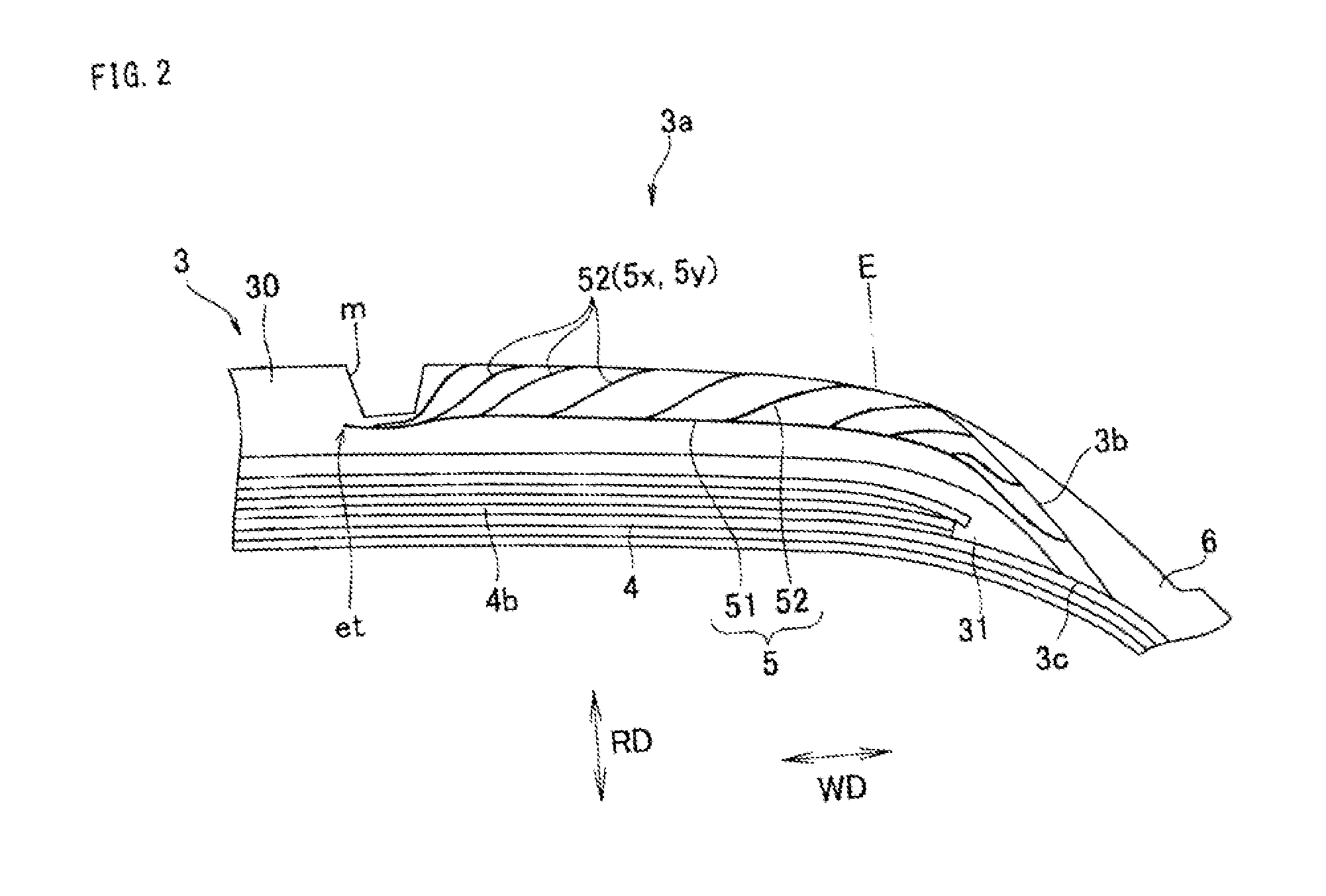Pneumatic tire
a technology of pneumatic tires and conductive parts, applied in the direction of tyre tread bands/patterns, vehicle components, transportation and packaging, etc., can solve the problems of difficult to improve the steering stability of any one of the dry road surfaces, the ability to always achieve the conduction performance, and the difficulty of obtaining a desired steering stability, etc., to achieve accurate conduction performance, improve the degree of freedom of design, and enhance the possibility of conductive surfaces being grounded on the road surface
- Summary
- Abstract
- Description
- Claims
- Application Information
AI Technical Summary
Benefits of technology
Problems solved by technology
Method used
Image
Examples
example 1
[0071]As shown in FIG. 2, the conductive portion constructed by the stem portion 51 and a plurality of branch portions 52 was formed in the tread rubber 30 of the non-conductive rubber. The angle θ of the branch portions 52 in relation to the horizontal direction was set to 70 degrees. The rubber hardness of the tread rubber 30 (the cap rubber) was set to 70 degrees, the rubber hardness of the conductive portion was set to 80 degrees, and the conductive portion 5 was made harder than the tread rubber 30.
example 2
[0072]The angle θ of the branch portions 52 was set to 50 degrees, in relation to the tire of the example 1. The other elements were set to the same as the tire of the example 1.
example 3
[0073]The angle θ of the branch portions 52 was set to 35 degrees, in relation to the tire of the example 1. The other elements were set to the same as the tire of the example 1.
PUM
 Login to View More
Login to View More Abstract
Description
Claims
Application Information
 Login to View More
Login to View More - R&D
- Intellectual Property
- Life Sciences
- Materials
- Tech Scout
- Unparalleled Data Quality
- Higher Quality Content
- 60% Fewer Hallucinations
Browse by: Latest US Patents, China's latest patents, Technical Efficacy Thesaurus, Application Domain, Technology Topic, Popular Technical Reports.
© 2025 PatSnap. All rights reserved.Legal|Privacy policy|Modern Slavery Act Transparency Statement|Sitemap|About US| Contact US: help@patsnap.com



